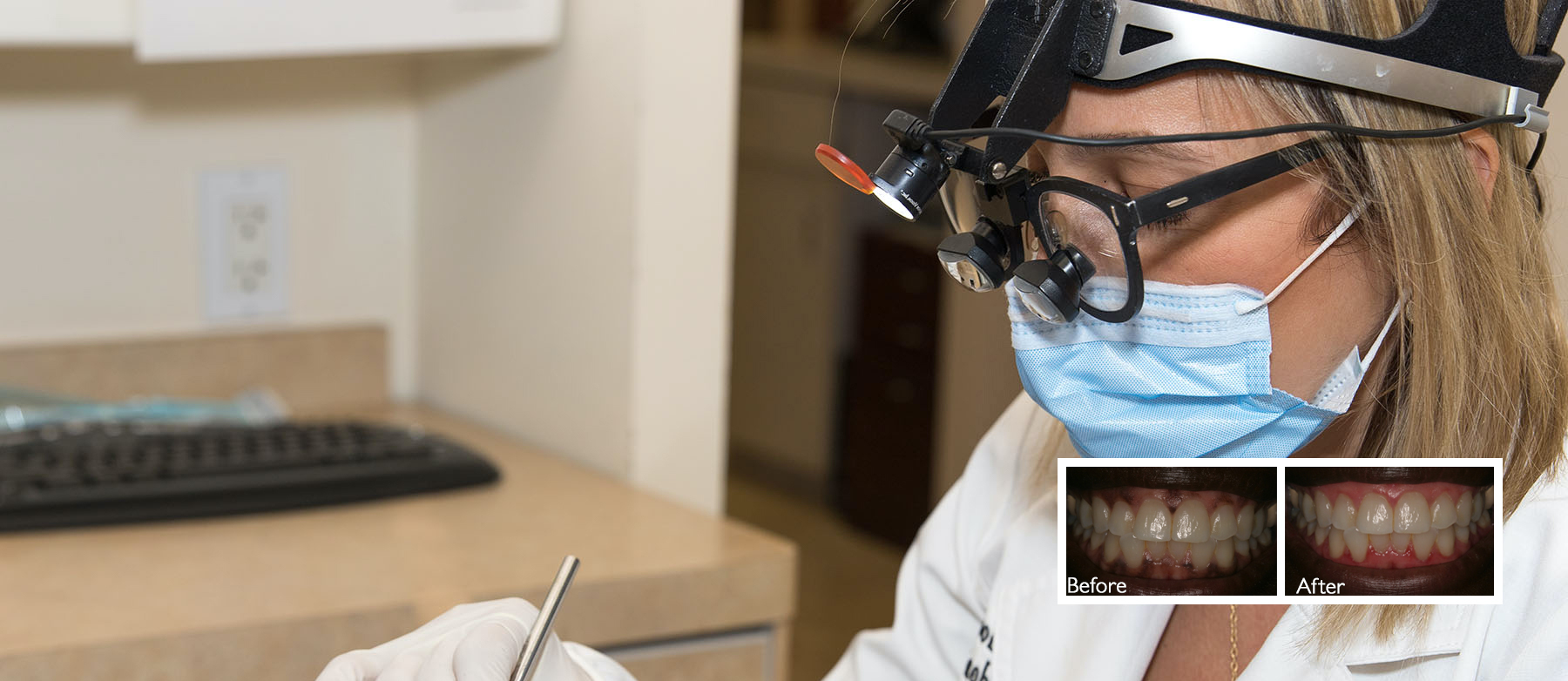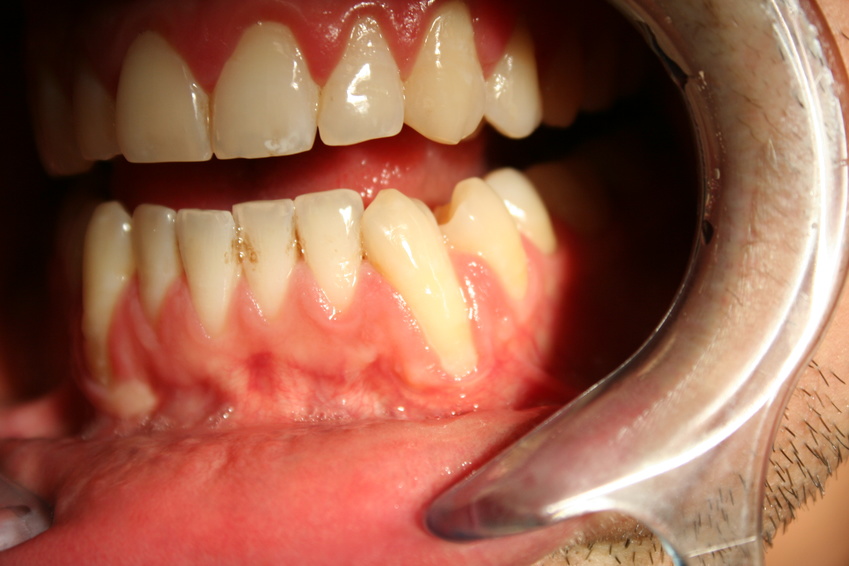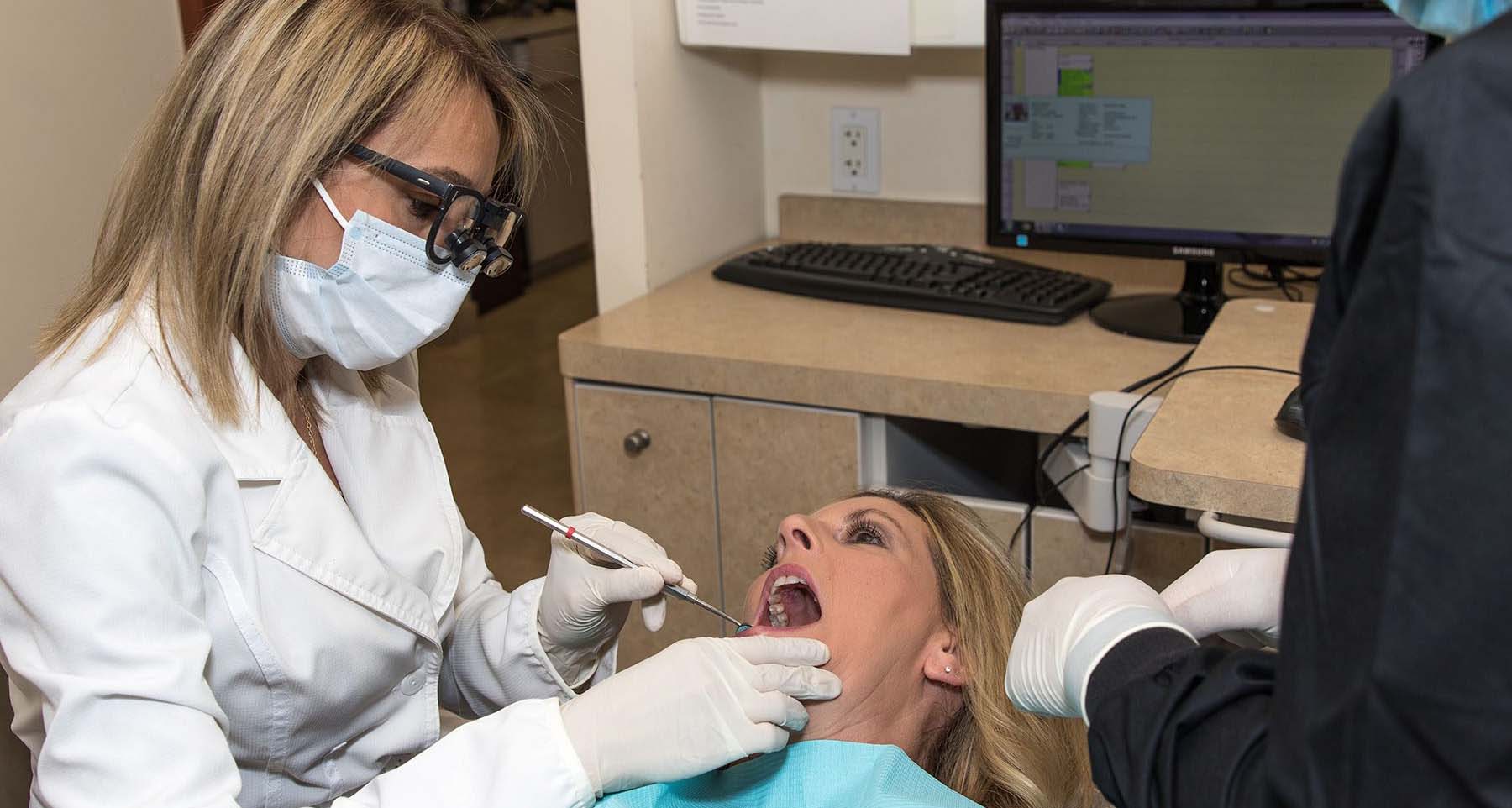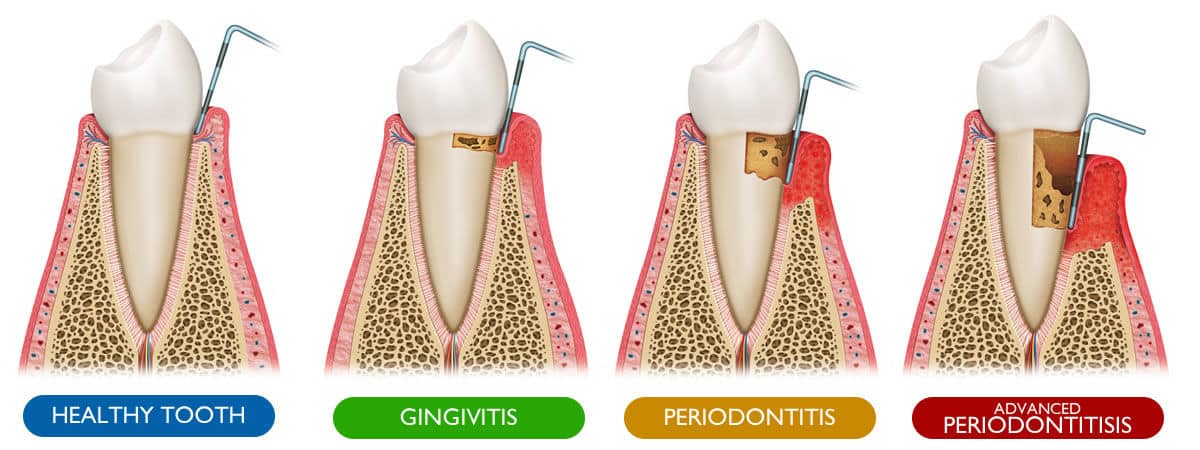Have you looked at your teeth in the mirror and noticed your gums are looking different? Do they look like they’re wearing away? Your gums could be receding, which is when they begin to pull away from your teeth. Let’s talk about what to do about receding gums and what causes it.
What Causes Gum Recession?
-
Aggressive Brushing and Flossing
There are a few factors that can cause your gums to recede. Firstly, it is very common that aggressive brushing and flossing are the problem. No one wants cavities, so we should brush, brush, brush and floss like crazy right? Not exactly, because you want to be thorough but still gentle. Aggressive oral hygiene is irritating to your gums, which the tissues won’t tolerate. Thus, they will pull away from the irritant. So, how do you gently brush and floss? To brush gently, always use a soft-bristled toothbrush and circular motions. When flossing, hug the floss against your teeth, then move it up and down while avoiding a see-saw motion.
-
Infection
Secondly, infection is another cause of gum recession. When you have infections in your gums, called gingivitis and periodontitis, you begin to lose the support around your teeth. Gingivitis is when the amount of bacteria that naturally lives in your mouth becomes too great and infects your gums. If this goes unchecked, then the bacteria will travel further down into the bone around your teeth causing periodontitis. As this occurs it causes the unhealthy gum tissues and supporting bone to pull away from your teeth.
-
Genetics and Age
Lastly, good old genetics and age can be underlying factors. If the members of your family tend to have problems with gum recession, then chances are you will too. A good example of this is diabetes, because not only can it be genetic and run in families, it also makes you prone to dental problems. In addition, the older you are, the more natural wear you will have on your gums. Thus, making you more likely to have some gum recession. Even though you can’t change either of these things, you can at least try to slow the process down.
Why is Gum Recession A Problem?
Gum recession is not something you want, because it can cause a few problems. When you lose gum tissue, the roots of your teeth become exposed. Your roots are naturally designed to stay covered up and protected. Since the roots do not have protective enamel over them, they are prone to cavities and sensitivity when they become uncovered. Additionally, when your gums don’t fill the spaces between your teeth as they should, more food and bacteria get trapped there. Which also makes your teeth prone to cavities and sensitivity from the acids this produces.
As mentioned, your teeth have bone and gum tissue to support them. So, losing either of these means weakening their foundation. If this progresses far enough, your teeth will become loose. When your teeth become mobile, or loose, the constant wiggling speeds up the progression of bone loss and eventually resulting in tooth loss. This can be quite a downward spiral once it begins.
See Also: Cost of Gum Recession Treatment in Los Angeles, CA
How Can You Stop Gum Recession?
At this point, you may be wondering “Do gums grow back?”. While you can’t regrow gums, you can slow or stop the recession from progressing further. Let’s talk about how to fix receding gums.
-
Natural Remedies
People today are always looking for a more natural approach to their health. As oral health is no exception, many people turn to these:
- Saltwater rinses.
- Oil pulling.
- Green tea.
- Aloe vera.
However, the best natural remedy is proper brushing and flossing. When food sits around your teeth and gums, it feeds the bacteria that naturally live in your mouth. The combination of bacteria and food produces a lot of acids that irritate the gums and weaken the tooth structure. So, you need to remove them to prevent infections and cavities. As mentioned earlier, do this gently by always using a soft-bristled toothbrush and avoid a hard scrubbing pressure.
When considering your options, you must consult with a dental professional to help you choose what is best for your situation. Dr. Delaram Hanookai at Southland Dental Care in Los Angeles, California is a great resource to guide you in this time. She will examine your teeth and help you decide whether a natural remedy or type periodontal disease treatment is best for you.
-
Treatment Options
You want to help your receding gums grow back, but you unfortunately can’t regrow gums. So, what treatment options do you have for gum recession? Once you make an appointment for an examination, you will know a lot more about your teeth and gums as well as what you need in order to help them.
-
Dental Cleaning
Having your teeth cleaned is likely the first step. Depending on how much tartar and infection you may have, you will need either a regular cleaning or a deep cleaning. If we recommend a regular cleaning, then you likely don’t have a lot of tartar or bone loss. On the other hand, if we recommend a deep cleaning, then you likely have some tartar deposits and infection. This is a very important step in getting your teeth and gums back to a healthy status. During a deep cleaning, your teeth are usually numbed and cleaned in sections. We do this so that each section gets thoroughly cleaned while you stay comfortable. Tartar and bacteria are then removed from your teeth and under your gums. After that, your gums will be able to heal from any infection and return to a healthy status. When your gums are healthy, this will either halt or slow any gum recession. It is very important to keep up with routine cleanings so that we can monitor your teeth for any changes.
-
Surgery
Surgery is another step in periodontal disease treatment that is for more severe cases of gum recession. The two different types are flap surgery and gum grafting. During flap surgery, we make a small incision in your gums so that we can lift the tissue away from the teeth. Once we lift it, then areas that were previously not accessible are then able to be thoroughly cleaned. After we clean all the tartar and bacteria off the teeth, the tissue is then stitched back in place. This way the tissue is able to heal so that any gum recession can stop or slow. Gum grafting is beneficial when there is no infection or tartar buildup, but gum recession is still occurring. This is a good example of where genetics and age come into play as mentioned earlier. During this procedure, a piece of tissue will be surgically removed from another area of your mouth, typically the palate, and sewn around the recessed areas. Grafting helps cover some of the exposed roots, and thickens the tissue to discourage further recession.
Even though periodontal disease treatment won’t help receding gums grow back, it is still a very important part of stopping the process. Plus, it helps achieve and maintain healthy tissues. This will be a very individualized process since every person and situation is unique.
-
We discussed what gum recession is and how to stop its progression. Moreover, we also answered the question “Do gums grow back?”. But most importantly, we discussed how Dr. Delaram Hanookai is available to help you decide what dental treatment you may need as well as what products are best for you. Contact Southland Dental Care in Los Angeles, California, at 818-788-8787, or schedule your appointment online today.









